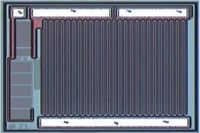The paradox of bare die is that whilst their production is integral to the creation and supply of a given semiconductor chip, in the majority of cases it’s never intended for consumers to be able to buy bare die in the un-encapsulated format. There are some exceptions where bare die would be the natural supply format but these tend to be very application specific. A function of this is that the process of specifying and buying bare die can often become more complex than anticipated.
Below are five key areas to consider:
- Establish the possibility of being able to buy bare die in the first place upfront. This makes best use of engineering time, assists supply chain down the line and in general can help you get your products to market quicker. In your evaluation check that the minimum order quantity and cost fits your commercial need or profile. Engineers can use our bare die parametric search to accelerate selection.
- Often there may be compromises made in terms of test level or outgoing quality on a bare die versus the fully packaged version. Find out what those are ahead. We assist our customers by adding the extra processes such as wafer testing and back-end wafer processing. At times adding these extra processes can be the access key to buy that bare die in the first place, particularly where warranty is an issue for the original bare die maker.
- Identify the necessary or preferred supply format. Most semiconductor companies will not have the means to offer anything different than what they are producing directly for their mass production package assembly lines. Either prep your assembly line or consider using a specialist bare die distributor who can both supply and process bare die from the standard factory output into the required format you need.
- All bare die should be stored in a special environment at every stage from point of leaving factory. Ensure any intermediary has the correct capability to store and handle the product. Bare die can be stored for long term timeframes with the appropriate system. Storage can be in-house at your facility or bare die can be supplied on JIT, KAN-BAN or similar logistic schemes. See long term storage for further details.
- Establish any long term project need or stocking plans up-front. If your project is has a long term horizon and you have gone through the initial steps of setting up and purchasing bare die then obsolescence or a change in the die design down the line can damage your project. At a minimum consider setting up a bare die obsolescence alert with your supplier whether the original device maker or bare die distributor.


